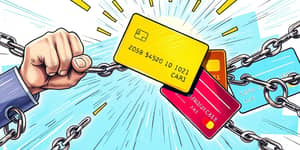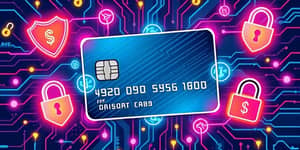
Credit cards have become an integral part of everyday spending, offering convenience and rewards but also introducing risks when mismanaged. In 2025, the United States holds a staggering $1.29 trillion in credit card debt, with the average household carrying $10,757 in balances. Achieving financial health and stability requires both knowledge and discipline.
This article explores how consumers can break free from debt traps, leverage financial literacy, apply practical budgeting strategies, and embrace emerging payment trends. By understanding the current landscape and adopting responsible habits, anyone can chart a path toward lasting wellness.
Credit card debt in 2025 is at a record high in dollar terms, reflecting widespread reliance on revolving credit for daily expenses and emergencies. Although inflation-adjusted balances remain below the 2007 peak, the sheer volume of outstanding debt represents a formidable burden on households across the country.
Average cardholders carry $7,321 in unpaid balances, and utilization rates hover around 20.7%. With average APRs soaring above 23%, many consumers face a historic high in absolute terms of interest charges that erode their purchasing power and delay financial goals.
One of the most insidious traps in credit card use is the allure of minimum payments. At first glance, paying only a small portion of a balance seems manageable, but it extends the repayment horizon and inflates total interest paid.
Consider a $5,000 balance at a 23% APR: making only the minimum payment could take decades to clear and accumulate thousands in additional fees. This cycle of increasing debt and stress perpetuates financial anxiety and prevents individuals from investing in their futures.
Education is the cornerstone of empowerment. Financially literate consumers are better equipped to compare credit offers, negotiate terms, and avoid predatory fine print.
By fostering skills, attitudes, and knowledge, individuals can recognize warning signs, plan for emergencies, and adopt habits that support long-term success. Communities, schools, and employers play a vital role in delivering robust programs.
Mental budgeting involves setting internal spending categories—such as housing, groceries, and entertainment—and tracking expenses against those buckets. This approach fosters mindful purchases and prevents overspending.
Pairing budgets with mentally dividing funds for categories instills accountability. Cultivating greater self-control and discipline can begin with small challenges, such as delaying non-essential buys or imposing weekly spending limits.
While credit cards dominate 31% of U.S. payment transactions, many consumers are shifting toward debit cards for everyday expenses to maintain direct control over spending. Younger demographics also embrace Buy Now, Pay Later services that break down costs into interest-free installments.
Each payment method has merits and pitfalls. Debit cards curb debt accumulation but lack creditor protections. BNPL offers short-term flexibility yet can undermine budgeting if used excessively. Responsible users weigh fees, due dates, and personal spending habits before choosing a tool.
Transitioning from credit stress to financial confidence involves deliberate action. By following a structured plan, anyone can reap the rewards of smart credit card use and build a sturdy economic foundation.
By integrating these strategies, individuals can move beyond short-term borrowing and toward long-term financial stability and growth. Responsible credit card use is not merely a tool—it is a mindset that paves the way to a brighter, more secure future.
References













